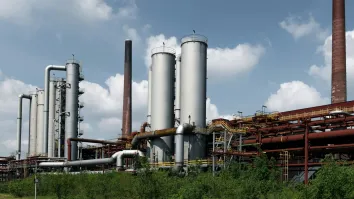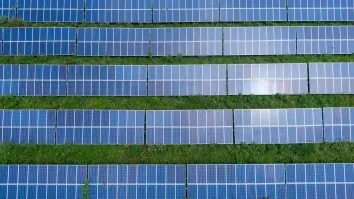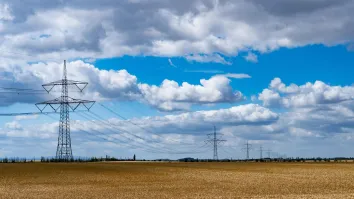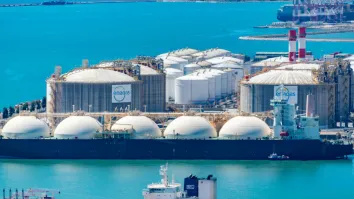A 1970s Oil Crisis replayed in modern days
By Dr. Victor NianA world thirsty for fossil fuels
Since the invention of the steam engine, fossil fuels have become instrumental sources of energy to power industrialisation and economic development. We have become so accustomed to the seeming abundance of coal, oil, and gas until the world was hit by worsened environmental pollution and then the 1970s oil crisis. Since then, the world has been shaken by a series of geopolitical turbulence centred around energy security across the 1980s and 1990s, sending shockwaves to the already highly volatile global fossil fuel markets. That’s when clean energy resources, such as renewables and nuclear became strategic options to move away from the dependence on fossil fuels. Due to practical constraints, the energy transition journey has not been a smooth one given the fundamental dependence on fossil fuels of the global economy as it is today.
Post-Pandemic geopolitical disasters.
As the world recovers from the devastating impact of the global COVID-19 pandemic, the outbreak of the Russia-Ukraine War has sent fossil fuel prices skyrocketing once again. Natural gas, as a cleaner alternative to coal, has been welcomed in many countries. This was especially in Europe, which received 155 billion cubic metres of natural gas (including liquefied natural gas or LNG) from Russia in 2021, accounting for almost 45% of its total gas import.
As the collective actions against Russian fossil energy exports deepen, Europe has struggled to find alternative sources of fossil fuels to fill in the huge supply gap, especially natural gas. As a result, spot electricity market prices have gone through the roof in many parts of Europe, with Denmark hitting a historic high of 8,420 Danish kroner (1,132.30 Euro) per MWh, Germany at 699.44 Euro per MWh on 25 August, Italy at 716.78 Euro per MWh on 26 August, and 580.55 GBP (658.56 Euro) per MWh on 26 September. It is daunting to see that even countries with a high share of renewables, such as Denmark and Germany, have not been able to avoid the impact of rising fossil fuel prices.
The sabotaging of Nord Stream pipelines has only made matters worse as the future of Russian gas supply to Europe becomes more uncertain with the war. While many have switched to LNG as a means of diversifying from pipeline gas, the share of LNG trade in the global gas market stood at just 52% in 2021, despite a continuous rise over the past two decades since 2000. Russia remains the fourth largest global LNG exporter, ranked after Australia, Qatar, and the United States which makes the transition away from Russian gas and LNG a challenging one.
On 5 October 2022, the Organisation of Petroleum Exporting Countries and their allies (OPEC+) announced that OPEC+ would reduce oil production by 2 million barrels a day – the biggest cut in production since the COVID-19 pandemic. Such a cut in production, equivalent to around 2% of the global demand for crude oil, had sent Brent Crude price rising by 1.5% to over USD93 (88.46 Euro) per barrel on the announcement of the cut. Despite a subsequent announcement by OPEC+ for maintaining the current production levels, China, the world’s largest fossil energy importer, and consumer announced the complete removal of all COVID-19-related restrictions in January 2023. With China opening up its economy three years after the pandemic, Asian demand for LNG is set to increase. As Europe is poised to continue rerouting of LNG ships from Asia to Europe in view of depleting gas reserves, and potentially further actions against Russia's fossil energy export, uncertainties will continue to cause volatility in Asian and global gas prices.
Asia exposed to the volatile gas market
The unprecedented volatility in gas prices has placed a hard hit on Asia, which competes with Europe for LNG imports. Both the Asia spot and Title Transfer Facility (TTF) gas prices were brought to record high, with the Asian benchmark spot price jumping to nearly USD84.76 (80.61 Euro) per MMbtu on 16 August 2022 – its highest since the outbreak of the Russia-Ukraine war. Backed by strong domestic growth and the clam-down on coal-fired power plants, China overtook Japan as the largest LNG importer since 2021, followed by South Korea and India. With the warming climate and rising gas prices, Japan saw a record high of 86,100 Yen (605.8 Euro) per MWh in electricity price. India suffered from its worst power crisis in April and May when heat waves peaked demand, causing widespread power outages in the country. With an expected rise in fossil energy demand and hence energy prices, with China abolishing its zero-COVID policy, net gas importers in Asia have been advised to brace for a stronger impact, especially those who depend on gas for power and heat production in the industrial sector.
What lies ahead for Singapore
Given resource constraints, Singapore relies on imports for most of its energy needs, with around 95% of our electricity generated from imported gas. Since 2013, Singapore has turned to the LNG market as a way of diversifying fuel imports from Indonesian and Malaysian pipeline gas to assure a better energy security position. Since long-term gas contracts in Asia are typically benchmarked to oil prices, increases in oil prices would invariably impact electricity prices in Singapore given the present dominance of gas in our energy mix. With the worsening global geopolitical situation, we have seen six consecutive hikes in our electricity prices since April 2021. While we might have welcomed a reduction of the household electricity tariff from Q4 2022 to Q1 2023, the global geopolitical developments are likely to keep the oil price to around a US$100 per barrel range with high volatility across 2023.
Amidst the evolving global energy landscape, pragmatic decisions and actions are urgently needed for Singapore to future-proof its energy strategy and maintain its economic competitiveness. Singapore has established specific targets as part of its longer-term energy strategy to reduce dependence on natural gas and the energy sector’s greenhouse gas emissions through diversification of the fuel mix. These include efforts to increase domestic solar capacity to 2 gigawatt-peak by 2030 from the present 703 megawatt-peak installation (as of Q2 2022) and plans to import a capacity of up to 4 gigawatts of low carbon electricity from the region by 2035.
On 23 June 2022, Singapore commenced its very first renewable energy import of up to 100 megawatts of hydropower from Lao People’s Democratic Republic (Lao PDR) via Thailand and Malaysia using existing interconnections, through the LTMS-PIP (Lao PDR-Thailand-Malaysia-Singapore Power Integration Project). On 25 October 2022, during the Singapore International Energy Week, Deputy Prime Minister Lawrence Wong announced Singapore’s national hydrogen strategy in which hydrogen and its derivatives such as ammonia (a form of hydrogen carrier) could provide up to half of the country’s power needs by 2050 as a means of further diversifying Singapore power sector’s fuel supply and achieving Singapore’s net-zero targets. In the longer term, as outlined by the Energy 2050 Committee Report published in March 2022, advanced nuclear power technologies could represent a strategic option to strengthen the country’s energy resilience towards an uncertain future.


















 Advertise
Advertise






